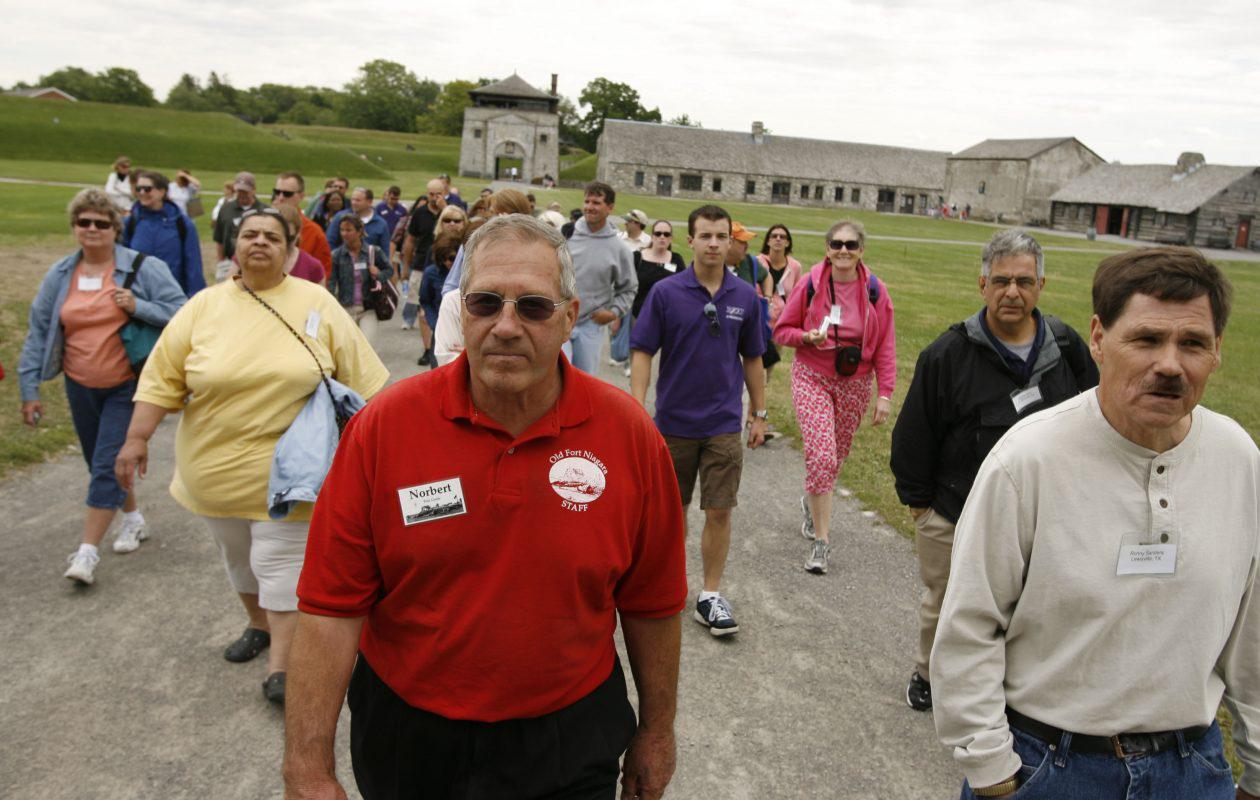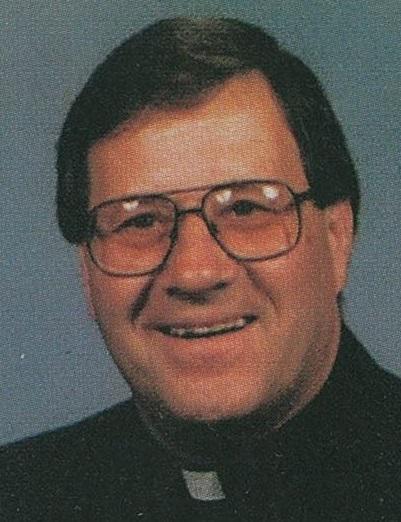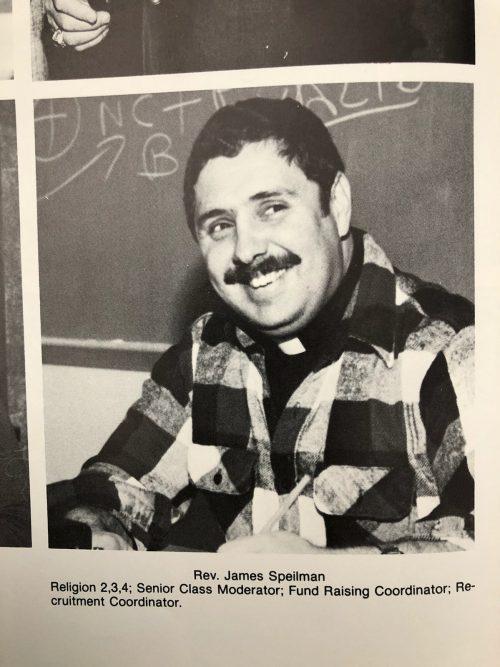|
Despite warnings, past Buffalo bishops returned abusive clergy to parishes
By Jay Tokasz
When a mother complained that the Rev. Norbert F. Orsolits propositioned her teenage son in a bar, the Diocese of Buffalo quietly sent him away for mental health therapy and listed him as "on leave" in its official 1979 directory. Then, within months, the diocese reassigned him to a new parish, where he later was accused of molesting at least two boys. Orsolits isn't the only Buffalo priest accused of sexual abusing children who had been marked as "on leave" and then put back into a parish. The Buffalo News found that from 1973 to 2000 the diocese assigned 11 priests to work in a parish or other ministry after they were marked as "absent on leave" or "awaiting assignment" in official directories. The diocese this year identified nine of those priests as having been credibly accused of sexual abuse of minors. The two other priests were publicly accused but not part of the diocesan list. At least three of the 11 priests – while on leave from a parish or otherwise unassigned – were treated at Southdown Institute, a mental health facility near Toronto, for sexual transgressions with minors and then reassigned to parishes. It's not known if the other eight priests were sent for treatment during their absences from parish work. But experts said dioceses often used vague terms such as "on leave" to shield priests who they had sent away for therapy. In some cases, official diocesan directories simply listed the address of the chancery after the name of a priest who was without an assignment while undergoing treatment. "That's the point – to obfuscate the situation as much as possible," said the Rev. Thomas P. Doyle, a canon lawyer and co-author of "Sex, Priests, and Secret Codes," which analyzes the history of clerical sexual abuse in the Catholic Church and how the church works to conceal the abuse. Catholic bishops in the United States were warned as far back as the 1950s that priests who sexually abused children shouldn't be returned to ministry. In the early 2000s, past Buffalo Diocese officials maintained that they did not return offending priests to work in parishes – a practice that sparked outrage in many other dioceses around the country. But Orsolits' admissions earlier this year that he had molested "probably dozens" of teenage boys unleashed a torrent of sex abuse allegations against Buffalo priests and unmasked some of the methods the diocese employed in handling priests who offended. It became clear that the Buffalo Diocese – from the 1970s through the 1990s – engaged in a similar pattern of shuffling abusive priests back into parishes. Current Buffalo Bishop Richard J. Malone said that the practice ended many years ago with the 2002 adoption of a new "zero tolerance" policy requiring U.S. dioceses to remove priests for even a single instance of child sex abuse. "The custom in the past, when an allegation would come decades ago, they would typically send that priest off for assessment at some institute that specialized in that. Sometimes that institute would recommend a follow up plan or a therapy, and sometimes, and we see now that this was a mistake, they would recommend to the bishop, 'He's really OK, you can put him back in ministry,' " Malone said. "We know that wasn't right most of the time. We would never do it now. Now we have zero tolerance." Malone said he has not assigned any priest who was credibly accused of sexually abusing a child into a parish. Keeping allegations secretOrsolits remembered being sent to Southdown following a mother's complaint about his interactions with her teenage son. "We went out drinking, one of the bars across from the airport, and I know I made a pass at him," said Orsolits. "I don't even recall his name." A few months after his treatment at Southdown Institute, diocesan officials placed Orsolits back in a parish – this time at St. John Vianney in Orchard Park. Two men recently told The News that Orsolits was assigned to St. John Vianney at the time the priest molested them as boys. In addition to Orsolits, then-Bishop Edward D. Head made the Rev. James A. Spielman pastor of two rural parishes in 1990, after Spielman spent several months getting counseling at Southdown. Head also returned the Rev. Martin L. Pavlock to work in St. Gregory the Great Church in Amherst and in Millard Fillmore Suburban Hospital following what Pavlock said was a seven-month stay at Southdown. Pavlock later went on to serve in two other parishes. Orsolits made a return trip to Southdown for psychiatric counseling in 1989. Again, the diocese gave the public no reason for his departure. He was listed in the directory that year with an address of 795 Main St., the site of diocesan headquarters. After his second stint at Southdown, diocese officials put Orsolits in what they termed "guarded" ministry as a hospital chaplain. He continued to celebrate Masses and resided for years in a rectory at St. Lawrence parish. The diocese kept sexual abuse allegations against priests secret for decades until this past March, when Malone identified 42 diocesan priests who had been credibly accused. Using the diocesan list as a starting point, The News found 11 examples of priests accused of sexual misconduct with children who were on leave or otherwise without an assignment before being sent back into a parish, including: • The Rev. Michael R. Freeman, who was listed with a chancery address in 1982. The next year, Freeman served as an associate pastor at St. Christopher Church in the Town of Tonawanda. He later moved to St. Mary of the Assumption Church in Lancaster. • The Rev. John P. Hajduk, listed with a chancery address in 1991, was assigned as pastor of St. Mary Church in Cattaraugus the same year. He was listed five years later as "absent on leave" and did not have another parish assignment after that, according to the diocesan directories. • The Rev. Bernard M. Mach had no assignment and was listed with a chancery address in 1990. A year later, he was assigned as pastor of St. Mary Church in Lockport. Mach was accused in a lawsuit of fondling and exposing himself to a 12-year-old boy in 1991 in the rectory of St. Mary. "There has been a long tradition here of getting priests out of Dodge and getting them treatment for the various afflictions of sexual assault and the crimes they committed," said Patrick J. Wall, an advocate for clergy sex abuse victims who visited Buffalo this past March for a news conference. Wall was a Benedictine priest in the 1980s and 1990s. He served in parishes in the Archdiocese of St. Paul and Minneapolis, often stepping in for priests who had been accused of abuse. Disenchanted with the church's handling of abuse cases, he left the priesthood in 1998 and co-wrote with Doyle "Sex, Priests, and Secret Codes." Wall said phrases found in Catholic directories such as "absent on leave," "absent on sick leave," "without assignment" and "in residence" are "classic red flags" that signal priests who may have been sent for treatment following a child sex abuse allegation. Of course, some priests listed as "on leave" or "awaiting assignment" in directories may have been dealing with a health issue or tending to the medical needs of a family member, further obscuring which clergy had molested children, said Doyle. Moving troubled priests aroundInstead of sending offending priests for treatment, bishops more commonly moved them into a different parish, Doyle said. Spending just a year or two at a parish or being removed as pastor before completing a six-year term were some other tell-tale signs of a priest in trouble, Wall said. Mach, for example, had six parish assignments in 13 years, said Wall, who examined the priest's assignment history. "They were churning him around, moving him around the diocese, because these reports were coming in," he said. Orsolits served at a dozen parishes in 15 years, mostly at the behest of Bishop Head, who was bishop of the Buffalo Diocese from 1973 to 1995. Head died in 2005. Two men who served as his vicar generals – a post that usually includes making personnel decisions – went on to become bishops in other dioceses: Bishop Donald W. Trautman, who retired as bishop of the Diocese of Erie, and Bishop Robert J. Cunningham, current bishop of the Diocese of Syracuse. Two accusers The News spoke with said Orsolits abused them when he was assigned to St. John the Baptist Church in Alden in 1967. Two other accusers said their abuse happened when Orsolits was at St. John Vianney in the late 1970s or early 1980s – after Orsolits' first trip to Southdown. Orsolits admitted to molesting "probably dozens" of boys. He also said he recalled having the most sexual contact with boys while he was assigned in 1978 and 1979 to St. James Church in Buffalo – two or three incidents. "I really wasn't heavy into it, but periodically there would be something that happened that triggered it," he said. Malone said in an interview this week that he was committed to correcting the mistakes of the past. "Most people see this as a mess I've inherited, which I'm trying to clean up," he said. "We're trying to do the right things with what we've found." Malone was appointed in 2000 as an auxiliary bishop of the Archdiocese of Boston and became bishop of the Diocese of Portland, Maine in 2004. He was installed as Buffalo bishop in 2012. Bishops warned decades agoThe U.S. Conference of Catholic Bishops adopted a zero tolerance policy for abusive clergy in 2002. But experts had cautioned the nation's bishops for decades before the new policy took effect. In 1963, the Rev. Gerald M.C. Fitzgerald wrote to the Vatican stating that he was "not sanguine of the return of priests to active duty who have been addicted to abnormal practices, especially sins with the young." Fitzgerald was superior general of the Servants of the Holy Paraclete, which ran a residential therapy program in Jemez Springs, N.M., for "fallen" priests. "Where there is indication of incorrigibility, because of the tremendous scandal given, I would most earnestly recommend total laicization," Fitzgerald wrote more than a half century ago. "I say 'total' designedly because when these men are taken before civil authority the non-Catholic world definitely blames the discipline of celibacy for the perversion of these men. They argue – right or wrongly – that these men turn to boys because they are denied the right of marriage." Two decades later, in 1985, Doyle co-wrote a 92-page report for the National Conference of Catholic Bishops that warned of a looming clergy sexual abuse crisis in the church. The report urged bishops to do further study of the problem. Doyle and his co-authors predicted potential catastrophic awards in civil litigation, loss of insurance liability coverage and huge amounts of negative publicity, if bishops did not develop a cohesive plan for handling sexually abusive priests. "We were trying to help the bishops," said Doyle, who was working at the Vatican embassy in Washington, D.C., at the time. "We received a fairly hostile response." Instead of endorsing the document, bishops accused the authors of trying to sell consulting services to individual dioceses, according to Doyle. "They said we were trying to make money off the problem," he said. "It just blew me off the stool. That never even crossed our minds." After the clergy sex abuse scandal exploded in Boston in 2002, the nation's Catholic bishops appointed a group of lay Catholics to evaluate the causes and context of the crisis. In 2004, the group, called the National Review Board for the Protection of Children and Young People, published a 145-page report of findings, including a section excoriating bishops for returning abusive priests to ministry. "Bishops were too willing to turn over the problem of sexual abuse of minors to psychiatrists and psychologists," the report said. "Moreover, even after the inherent limitations of treatment became well recognized, church leaders continued to accept favorable reports as a basis, without any other considerations, to return perpetrators of abuse to positions of ministry." The review board also found that some church leaders withheld key information from treatment centers. 'I never got justice'Doyle, the canon lawyer who had tried more than 30 years ago to help bishops deal with a brewing clergy sex abuse crisis in the church, has become one of their biggest adversaries in civil cases brought by victims seeking to unmask the cover-up of molestations. Doyle was called as an expert witness into the inner workings of the Buffalo Diocese in a 2014 civil case brought by David A. Husted Jr., who accused Spielman of repeatedly molesting him when he was a teenager at Archbishop Walsh High School in Olean. Husted sued Spielman, the high school, the Diocese of Buffalo, and the Diocese of Honolulu, where some of the abuse was alleged to have occurred. Early on, Southdown Institute also was a defendant in the case. Southdown officials confirmed in court records that Spielman spent six months at the facility in 1989 and 1990. He was put back into two parishes before taking leave again in 1993, according to diocesan directories. As part of the litigation, the court ordered the Buffalo Diocese to turn over to Husted's lawyer, Michele M. Betti, documents from Spielman's personnel file. But what the Buffalo Diocese handed over appeared to be incomplete, Doyle told the court. The file should have included more information about a previous accusation against Spielman that was settled in 1993 and became public, Doyle said in his affidavit. It also should have included more details about Spielman's time at Southdown, he said. Nonetheless, Doyle concluded that Spielman "probably committed acts of sexual abuse in the seventies and these were known by the bishop" when Spielman was put back into parishes. Husted ended up reaching a $1.5 million settlement with the diocese – the largest known settlement for a clergy sex abuse case in the Buffalo Diocese. But Husted believes there still needs to be a full accounting of the extent of the cover-up of sexual abuse by Buffalo's bishops. "It's not over. It's not even close," he said. "I never got justice because the Diocese of Buffalo never let it be known."
|
.
Any original material on these pages is copyright © BishopAccountability.org 2004. Reproduce freely with attribution.


